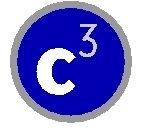Iwate (Part 2)
Yesterday we got an early start for the two hour drive from Morioka back to Miyako, on the coast. Our first stop was the Miyako Community Church, where we dropped off some supplies and picked up some more volunteers. Fortunately their church is just high enough up the hill to have been spared any damage, but the carnage begins within a block of their location.
Our plan was to join several others and spend the morning playing with kids at an evac site in the local elementary school. But by the time we got there it was almost lunch so they asked us to wait until 2PM to play with the kids. That meant our Covenant team of 5 wouldn’t get to join in since we needed to be on the road by noon. So we said goodbye to the rest of the team at the elementary school and headed home.
We drove along the Sanriku Coast from the little town of Taro, just north of Miyako, all the way to Kesennuma in neighboring Miyagi prefecture. The 140 km (90 mi) of coastline we drove is only a small portion of the 800km (500mi) that suffered tsunami damage, and yet the seemingly endless march of village after village, town after town, city after city that lie in ruins was almost surreal.
In my last post I mentioned Taro, the town that had a huge sea wall but was still destroyed. We actually got out and walked along that 10 meter high sea wall.
Then we started the long drive south, passing through countless scenes of destruction and sorrow.
The Sanriku coastline is known for its beautiful vistas in the countless bays and inlets. Much of that beauty is still intact.
And yet if you turn to the left you see this…
This little farming village probably only had a handful of homes, but all that’s left are fields ruined by saltwater and sickening scenes like this.
After passing through the cities of Kamaishi and Ofunato, we arrived in Rikuzen Takata. What we saw there was almost beyond description. This was a city of about 24,000 people, situation on a large piece of flat land right on the coast. What makes this city different from so many other locations is the distance one would need to travel to get into the hills. In many of the small villages and towns it was only a matter of running 50-100 meters to get to safety. In Rikuzen Takata there are large sections of the city that are at least 2-3km from the hills and lie completely exposed to the ocean. It took us a while to actually comprehend what we were seeing because there is so little left. Shells of concrete buildings sporadically dot the area but in between them there is hardly any evidence at all of what used to stand there.
The first thing we saw was a pair of five story apartment buildings with windows blown out up to the fourth floor.
Then we looked out toward the ocean and saw the remains of the ball park. The earthquake caused the entire coastline in this area to sink a meter or more so much of what used to be dry ground is now under water.
We saw the local hospital that had been in the news when rescue teams found several hundred people on the roof a couple days after the tsunami.
There is just so little left in this city… it’s hard to imagine how it could ever be rebuilt.
Our final stop on the coastline was the city of Kesennuma. I was there a couple weeks earlier and saw the damage around the picturesque harbor but didn’t make it to the back side of the hill. On that side of town there were some large fuel tanks near the coastline that got slammed by the first wave. One of them burst open and the spilling fuel caught on fire. Then as subsequent waves hit they washed the entire town in burning fuel and the city burned for days.
I am sorry for posting so many photos of horrifying scenes but if it helps people get an idea of the scale of this disaster then perhaps this blog will have served its purpose.
Our team arrived back home in Tokyo and Chiba some time after midnight. We were all emotionally exhausted but completely committed to the task that lies ahead. This is a small work involving a small network of churches and yet we have already seen God at work and we look forward to continuing to help however we can. This isn’t about anything but love. We see those who are suffering and have no choice but to show them the love of Christ. Jesus was deeply troubled when he saw people suffering, and he had a habit of stopping right there, putting everything else on hold, and simply reaching out in love to ease the suffering and pain how ever he could.
We want to reach out in the same way, in the name of Jesus Christ and believe that God will be glorified in the process.
My next trip north will probably be next week from Tuesday thru Thursday or Friday.
See original here: Miyamotos Japan Mission part 2
































